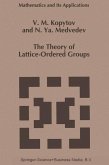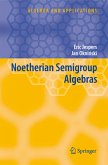A partially ordered group is an algebraic object having the structure of a group and the structure of a partially ordered set which are connected in some natural way. These connections were established in the period between the end of 19th and beginning of 20th century. It was realized that ordered algebraic systems occur in various branches of mathemat ics bound up with its fundamentals. For example, the classification of infinitesimals resulted in discovery of non-archimedean ordered al gebraic systems, the formalization of the notion of real number led to the definition of ordered groups and ordered fields, the construc tion of non-archimedean geometries brought about the investigation of non-archimedean ordered groups and fields. The theory of partially ordered groups was developed by: R. Dedekind, a. Holder, D. Gilbert, B. Neumann, A. I. Mal'cev, P. Hall, G. Birkhoff. These connections between partial order and group operations allow us to investigate the properties of partially ordered groups. For exam ple, partially ordered groups with interpolation property were intro duced in F. Riesz's fundamental paper [1] as a key to his investigations of partially ordered real vector spaces, and the study of ordered vector spaces with interpolation properties were continued by many functional analysts since. The deepest and most developed part of the theory of partially ordered groups is the theory of lattice-ordered groups. In the 40s, following the publications of the works by G. Birkhoff, H. Nakano and P.








